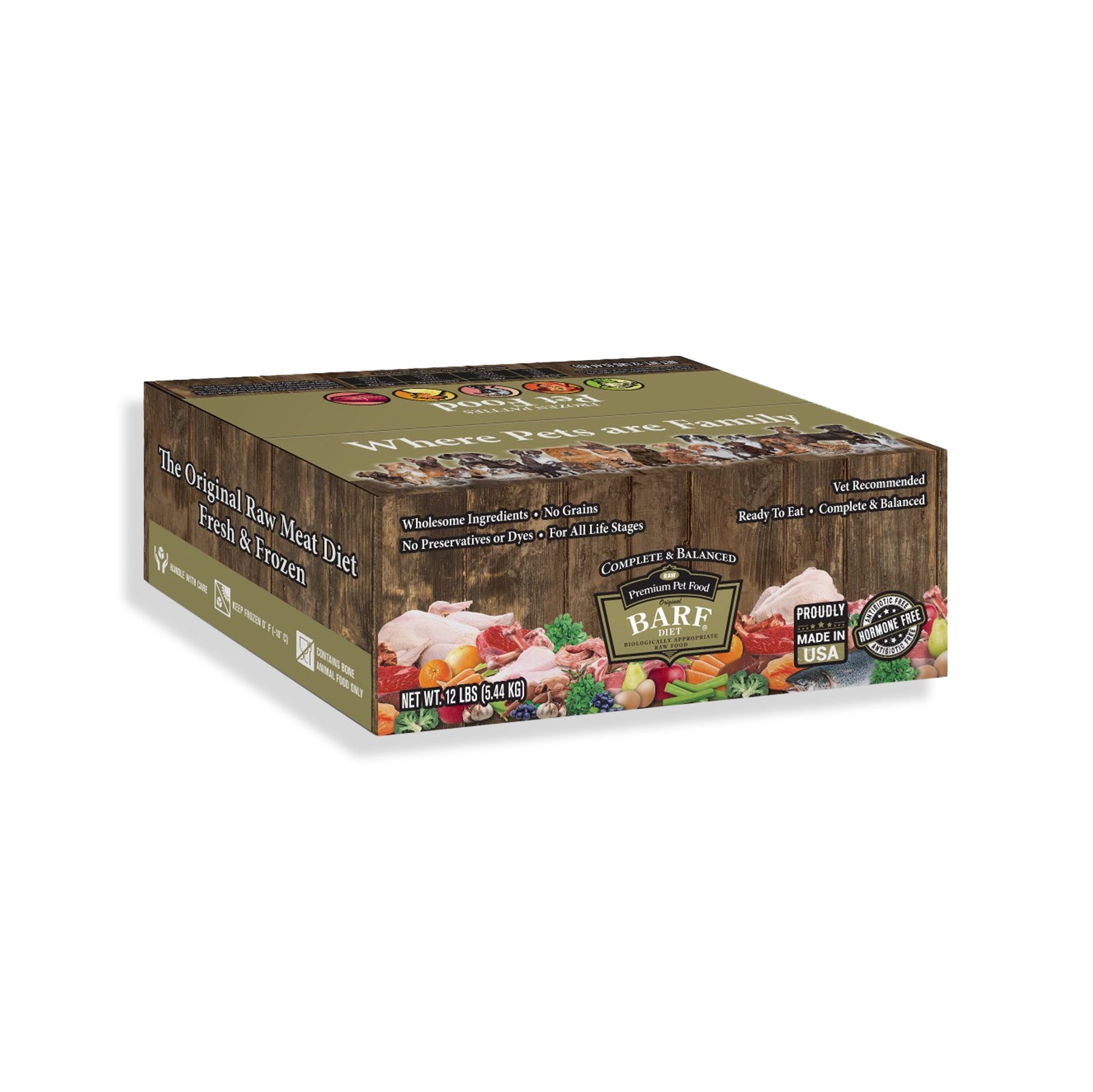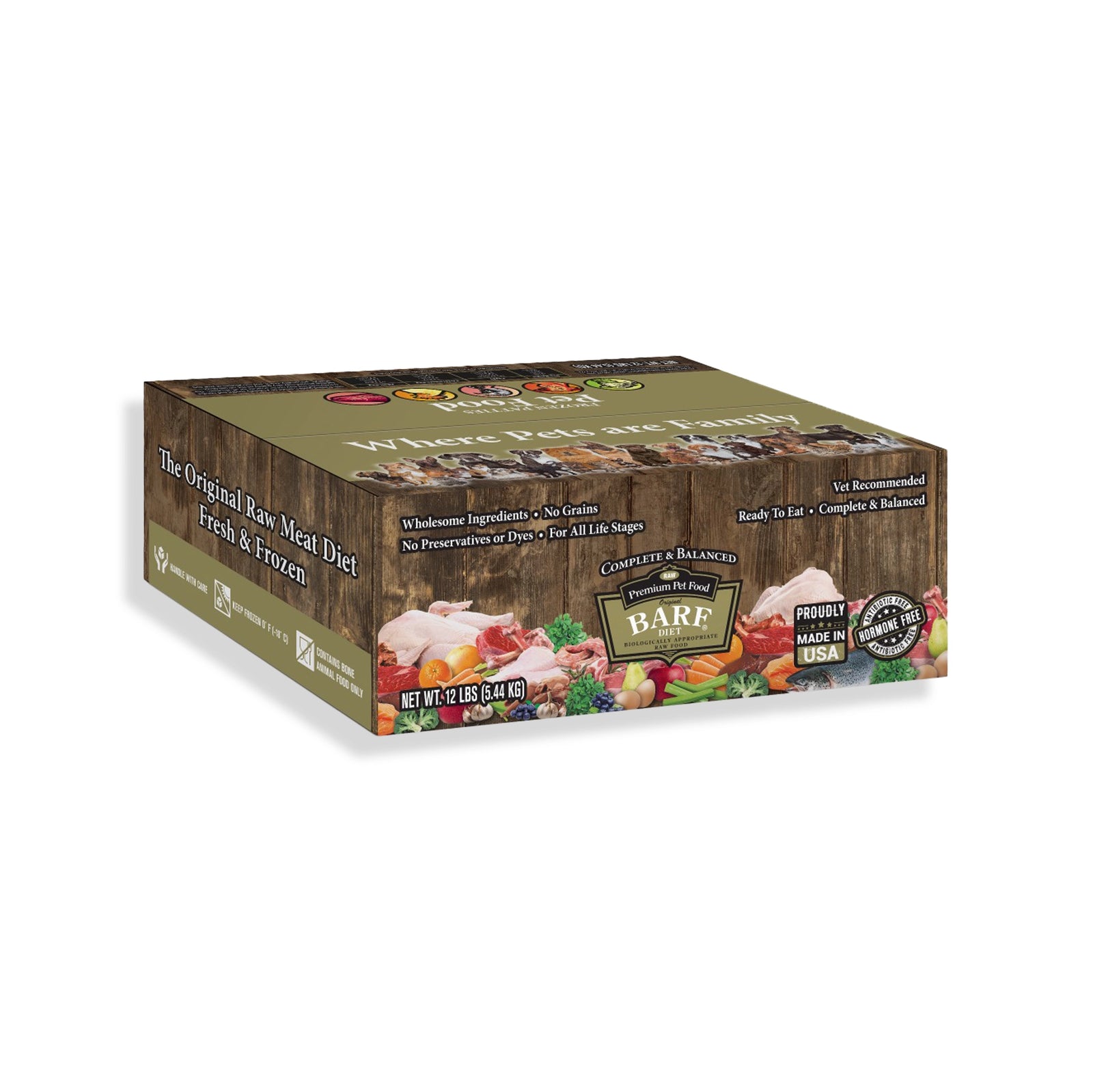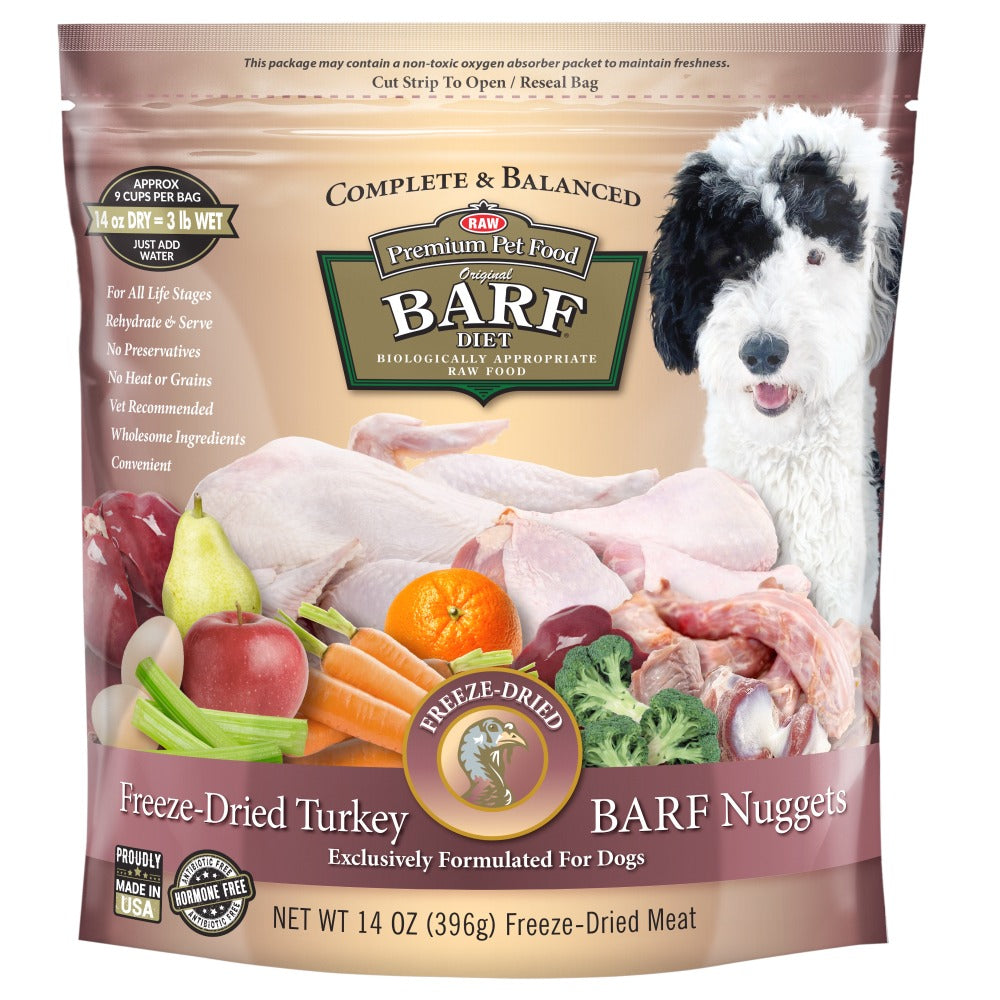Congratulations! You’ve just discovered the best way to improve the health and well being of your pet. It’s important to follow the guidelines below to ensure a successful conversion to our raw diet.
We advocate a 6-day feeding schedule with the 7th day being a day of fasting. This gives your pet’s body a day to properly detoxify and eliminate the possible buildup of waste material.
Which To Choose: the Fast or Slow Switch Method
For most dogs, the fast switch method is best – it’s fast, easy and perfect for puppies and healthy, active dogs. If your dog is older, has a sensitive stomach or has a pre-existing health condition, then the slow switch method is best for you.
Rapid Switch (Recommended Method): If your pet has a strong immune system and is generally quite healthy, an immediate conversion can be done. Fast your pet on the first day to allow the body to cleanse itself of toxins and to make your pet eager for their next days meal.
Be aware that the normal detoxification process may cause temporary symptoms of vomiting or diarrhea. * This may also be the result of eating too fast, gulping, or possible temperature variations.
*There is no need to be alarmed if these symptoms occur initially as your pet’s digestive system gets used to the change. We recommend the same supplemental treatment of the E-BARF® Plus and salmon oil as we do for the slow conversion because it is always best to strengthen the immune system to maximize the digestion process.
Slow Switch: This method is strongly recommended for pets with compromised immune systems or sensitivity to dramatic changes in diets. The raw meat diet should be introduced slowly to prevent major detoxification symptoms.
Day 1: Fast your pet. Allow the body to cleanse itself of toxins and get your pet eager for raw.
Day 2: Start out with 10% being the raw diet and 90% of their old diet.
Because the digestion time is different for processed diets and raw meat diets we suggest that you separate the feedings and feed the old diet in the morning and the raw food at night.
Day 3-10: Increase the raw diet each day by 10% and decrease the old diet by 10% for the next 9 days.
Day 11: On the 10th day, you should be feeding only the BARF Diet®™










